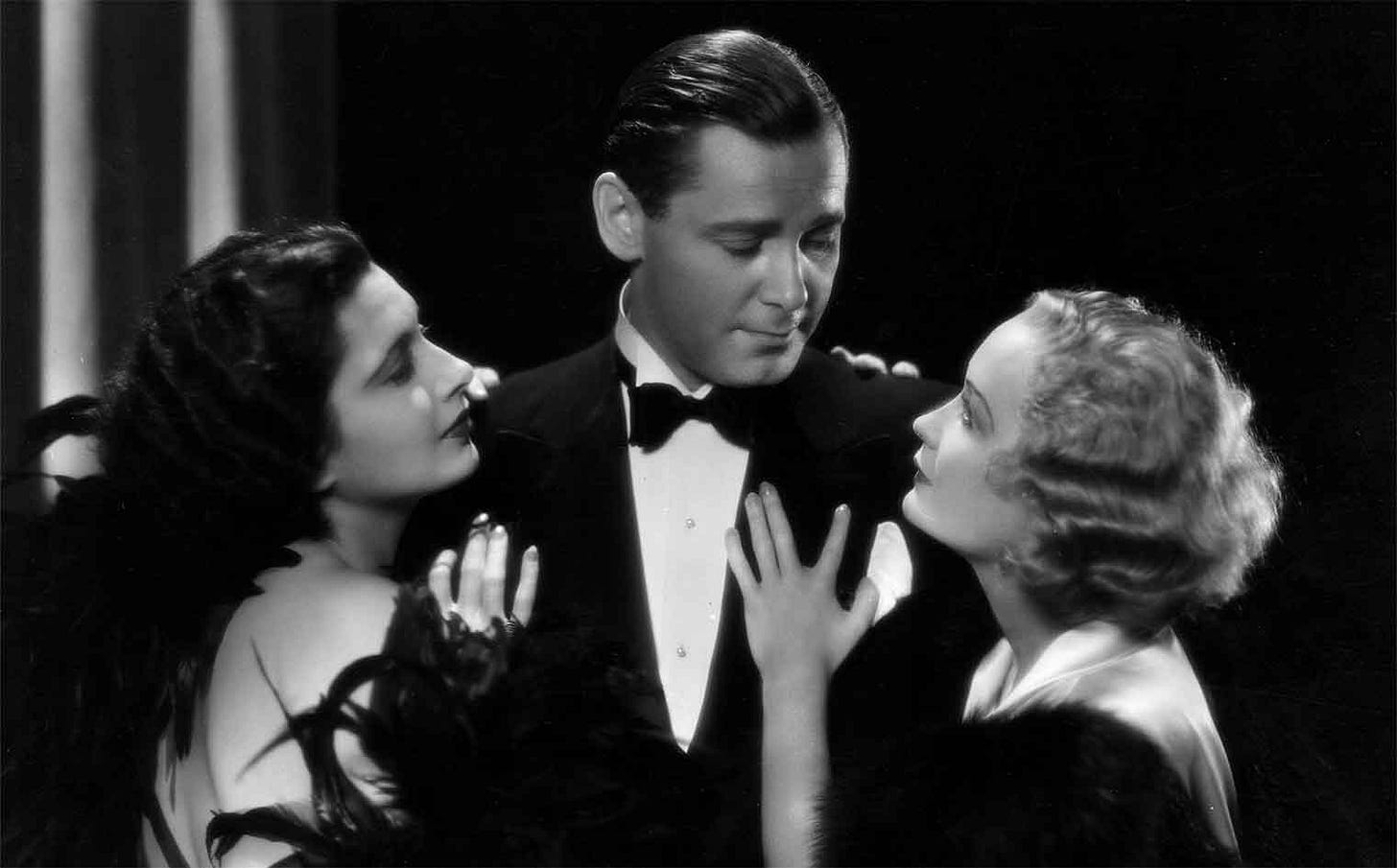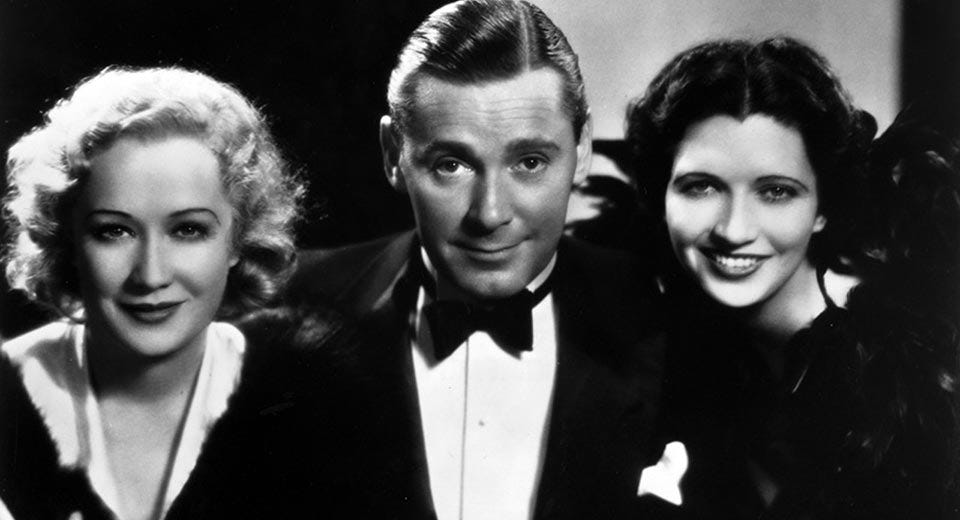Welcome to issue #3 of The Walk Back, a monthly movie-going newsletter. Each month, I catch a revival screening and write a piece about the film. It’s less of an in-depth review or analysis, and more focused on the first thoughts that came to mind on my way home from the theater. These newsletters also feature any updates for projects I’m working on, plus some recommendations of things I’m currently watching, listening to or reading.
Project Updates:
I recently had the opportunity to edit a PSA about the LA wildfires for the Property Brothers. It was a huge lift in a short amount of time, and I’m very proud of the results. The video contains a lot of helpful information on the rebuilding process along with tips on fire-proofing your home.
My good friends over at Tesseract Cinema are hosting a screening of an all-time LA classic, Amy Heckerling’s Clueless, to fundraise for Greenline Housing Foundation’s Eaton Fire Relief Program. They were kind enough to ask me to design a limited run poster for the event. I love how the poster turned out and I’m super excited to see what events Tesseract continue to cook up. The event is Saturday 4.26 at The Broadwater Second Stage. Tickets are on sale now!
Walkin’ back from… Trouble in Paradise (1932)
10am screening at Vista Theatre, 35mm print
I got an early start this Saturday and took a trip over to the Vista Theatre in Los Feliz, a gorgeous and recently renovated movie house from the 20’s that’s one of the best places to catch a movie in LA, for a 35mm screening of Trouble in Paradise. Another reason why I love living in this city is that I can go watch a black-and-white screwball comedy from the 1930’s at 10am and the theater will be packed. The print looked pristine and the crowd was totally locked in. Getting such an early start meant actually finding good parking nearby, so I have a quick, sunny morning walk ahead of me up Hillhurst.
I fell in love with the screwball comedy a few years back and it’s grown into one of my favorite genres of film. Exploring all of these wonderful comedies from the 30’s and 40’s like Bringing Up Baby, The Palm Beach Story, Midnight, The Lady Eve and Design for Living was eye opening. They’re zany, romantic and feel modern beyond their years. There’s an unexpected level of craftsmanship for films that could be dismissed as just “light and breezy”. I caught Trouble in Paradise for the first time last year and it instantly shot up into my top favorites of the genre, so getting the chance to see it with a crowd was an opportunity I couldn’t pass up. Because as fun as these movies are to watch at home, they’re 10 times more fun to see in a packed theater.
One of the key figures of the screwball genre is German director Ernst Lubitsch, whose films had such a distinct, personal flair that the term “The Lubitsch Touch” was coined. The Lubitsch Touch refers to the elegant subtlety and charming wit of his work. The way entendre layers on top of entendre, his use of space on and off camera, how he reveals the inner turmoil of a character without words, and his knowing what to leave to the audience. Trouble in Paradise is one of his finest films and one that has proven to stand the test of time among film fans. The movie is a love triangle between two master thieves, Gaston and Lily, and their mark for their next big pay day, Mariette, a rich widow and perfume magnate. Outside the triangle is a supporting cast of bumbling suitors and grumbling employees all competing for Mariette’s attention. Deception, seduction and romance ensue as Gaston conspires with Lily while falling for Mariette.
What makes a film like Trouble in Paradise so special is that it was produced before the enforcement of the Hays Code. Named after the president of the Motion Picture Producers and Distributors of America at the time, the code was an industry-wide set of guidelines for what was deemed acceptable and unacceptable to show in a film. While the code was technically adopted in 1930, it wasn’t strictly enforced until 1934, two years after Trouble in Paradise. The code initially started with a list of “Don’ts” and “Be Carefuls” regarding what couldn’t and shouldn’t be shown on film. This contained everything from showing a man and woman in bed together, nudity and profanity to mixed-race romance, scenes of actual childbirth, white slavery and “any inference of sex perversion”. I think my favorite item on the list is this “Be Careful”: “Theft, robbery, safe-cracking, and dynamiting of trains, mines, buildings, et cetera (having in mind the effect which a too-detailed description of these may have upon the moron)”. By the time the code was enforced in 1934, it became broader and stricter, prohibiting movies from “lowering the moral standards of those who see it” and calling for depictions of the “correct standards of life”. The MPPDA put a stopwatch to on-screen kisses and cracked down on any bumbling, incompetent portrayals of authority figures. The very fact that Trouble in Paradise centers on two lovable thieves and has you rooting for them to get away with it would have been a major red flag with the code, and only would have been permissible if Gaston and Lily were far more unlikable and ultimately punished for their crimes (preferably by a charming, heroic lawman). Trouble in Paradise ends on such a wonderful high with a moment that would have had to have been a complete 180 if the filmmakers had to bend to the Hays Code. It’s easy to think of old Hollywood films being dusty and overly tame, but the pre-Hays Code era is filled with exciting and provocative films that feel surprisingly modern in their depictions of human relationships and dynamics.
Aside from being a delightful and hilarious story, Trouble in Paradise is loaded with great filmmaking techniques. There’s an incredible use of miniatures in the opening sequence that’s impressive even by today’s standards. The camera starts framed outside of a hotel room window late at night, looking in on a man that’s been knocked out and struggling to regain consciousness. The camera smoothly tracks away from the window, across a courtyard and then onto the hotel wall. The film then match-cuts to a dollhouse replica of the hotel (that somehow even manages to match the shadows on the wall) surrounded by darkness, and the camera pulls back while the miniature hotel rotates on its axis to reveal another side. The camera pushes back in, tracks through the darkness and seamlessly cuts to a new tracking shot that lands on Herbert Marshall standing on his balcony. It’s a stunning sequence of shots that I had to rewatch the second I got home and take notes on because I already know someday I want to steal it for a project.
Lubitsch’s camera is playful and light on its feet, frequently using quick pans to reveal new gags. He often employs minor effects and visual flairs that give his films so much character without overpowering the actual characters. Shots are captured through mirrors and silhouettes, and not just because it looks stylish. It’s always in service of the themes and tone of the scene. Pages magically turn on their own and clock hands change to reveal new information through the passage of time. There’s a beautiful moment early on when Gaston and Lily are first falling in love. They lay back on a chaise lounge and begin to kiss. Rather than just fading to black or having the camera pan away to some symbolic object or a beautiful sunset, the camera stays locked off and both Gaston and Lily fade away and magically disappear. It’s romantic and surprisingly surreal for a comedy of this era (and a clever way to skirt around sex in 1932). Lubitsch uses this fading technique in a few more instances and now it’s built into the thematics. It’s no longer just a one-off visual gag. I think that’s such a crucial part to the Lubitsch Touch and why his work feels so subtle. Attention isn’t overly drawn to the visual tricks because he really incorporates them into the story and gives them all proper meaning. It’s never style over substance.
There’s a clever use of space and sound that I really tapped into on this viewing. There are several scenes set outside Gaston and Mariette’s opposite bedroom doors. Characters linger outside of the doors, listen in, race up and down the stairs and call to people off camera. The sound of footsteps and people grumbling play into the comedic moments and the sound of silence fills the romantic scenes set in the hallway. Trouble in Paradise is barely over 80 minutes and yet it’s filled with a seemingly endless well of material and filmmaking techniques to swim through. It’s a landmark film for comedy and almost 100 years later, it still made an audience crack up at 10am. It’s a testament to the kind of innovative storytelling that thrived before the Hays Code, when characters could be seductive and provocative and every film’s ending didn’t have to scream to the audience at the top its lungs, “CRIME DOESN’T PAY!”
Trouble In Paradise is unfortunately in need of a new physical release (there is an old Criterion DVD you can still track down) and not readily available on streamers as of this posting. Media preservation is so important and the idea of a genius movie like this slipping through the digital cracks forever is tragic. Thankfully, there is currently a solid version available to watch for free over on the Internet Archive.
Recommendations of the month!
Favorite first-time watch:
Between the Lines (1977). A fun work place comedy directed by Joan Micklin Silver and starring a very young Jeff Goldblum. The film centers on the staff of a small-time Boston newspaper getting caught up in a corporate takeover. It’s a quirky ensemble movie with some great location photography of 70’s Boston. Currently streaming on Tubi (free with ads) and the Criterion Channel, and is available on blu-ray from the Cohen Media Group. Trailer
Physical media pick of the month:
North by Northwest 4k UHD from Warner Bros. I was lucky enough to catch this new restoration on 70mm at the Egyptian last year and was very excited to see how the home presentation looked. I can honestly say this is the best looking home video release I’ve ever owned. The restoration work is incredible and this is the closest I’ve had a disc feel like I’m watching an actual film print. Also this has become a top 10 favorite movie for me, so 1,000% recommend for all my fellow physical media dorks.
What I’ve been listening to:
Romance by Fontaines D.C. (2024). Irish indie rock. Lyrically engrossing and I’m fascinated by the production. Bandcamp / Spotify
What I’ve been reading:
Situation Nowhere by Bobby Miller (2025). Yes, I’ve known Bobby for over a decade now and yes, I’m biased. And yes, this book is hilarious and a perfect read for these crazy times. Over-the-top, dystopian satire full of surprises. Pick it up here!
That’s it for this issue of The Walk Back! You can subscribe to receive updates on all future posts via email, Substack, or both. A new issue of The Walk Back is out the first Thursday of every month with a bonus post the third Thursday every month.





